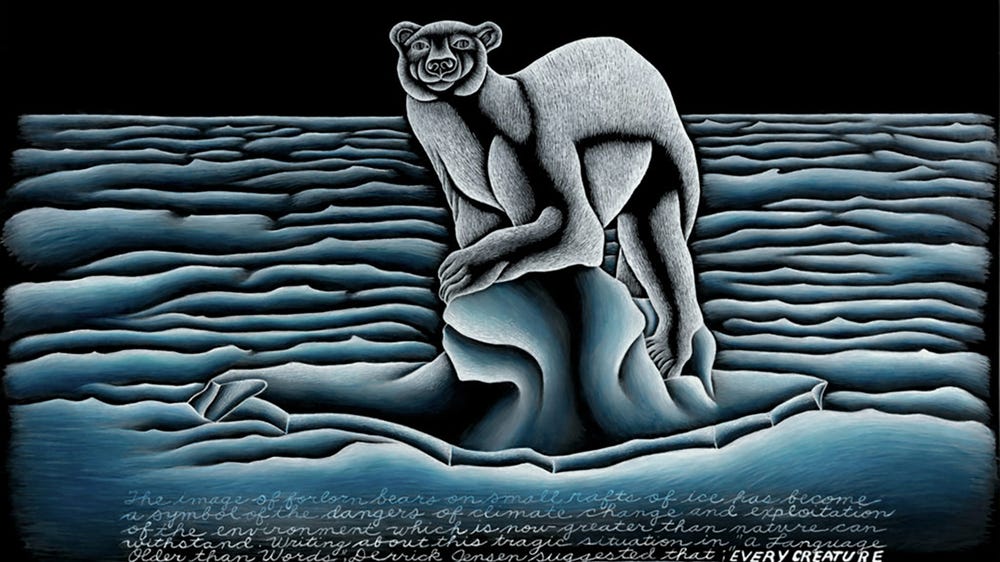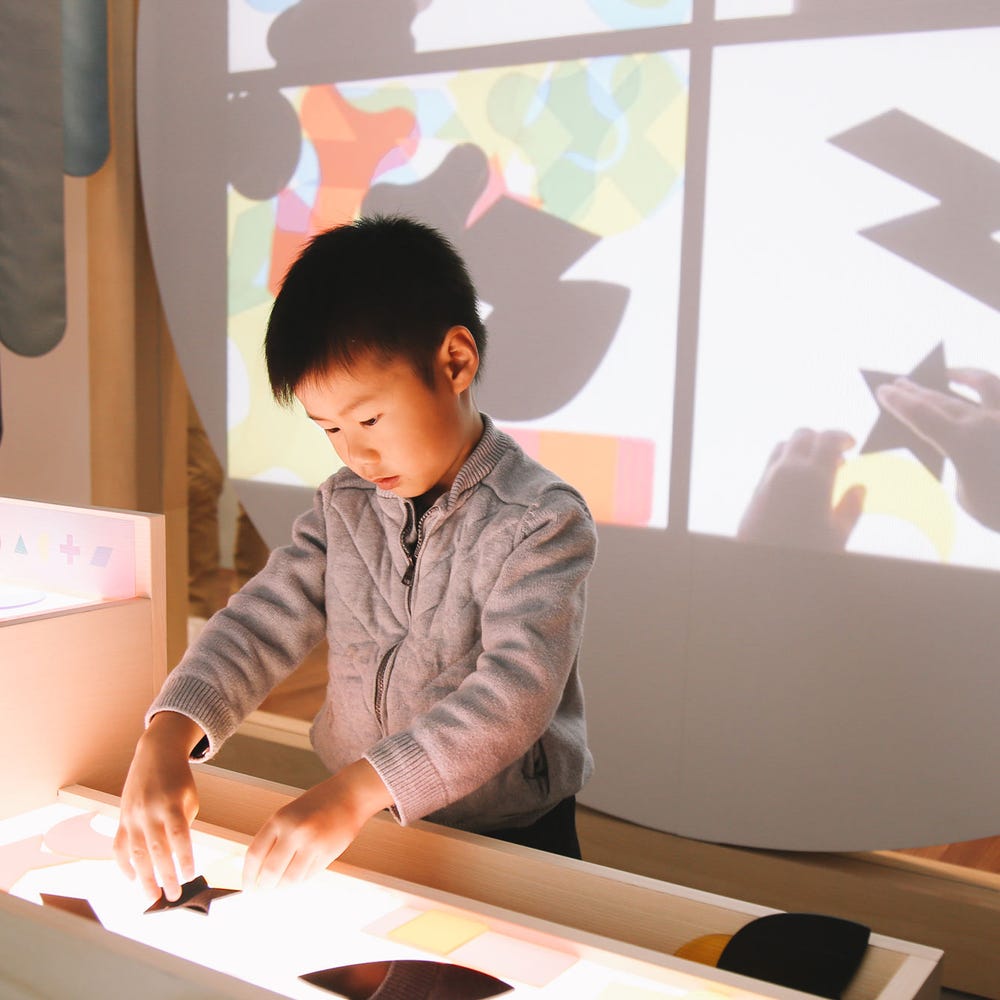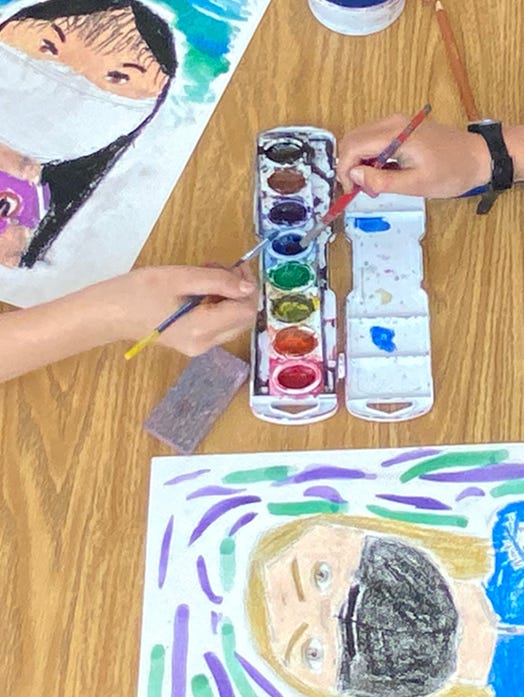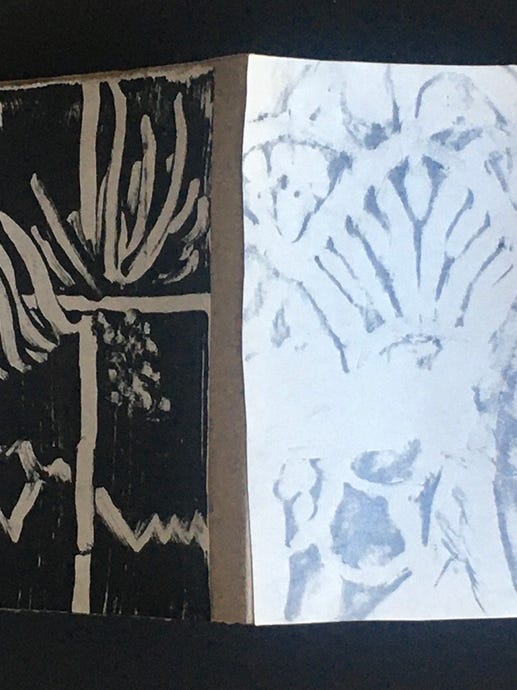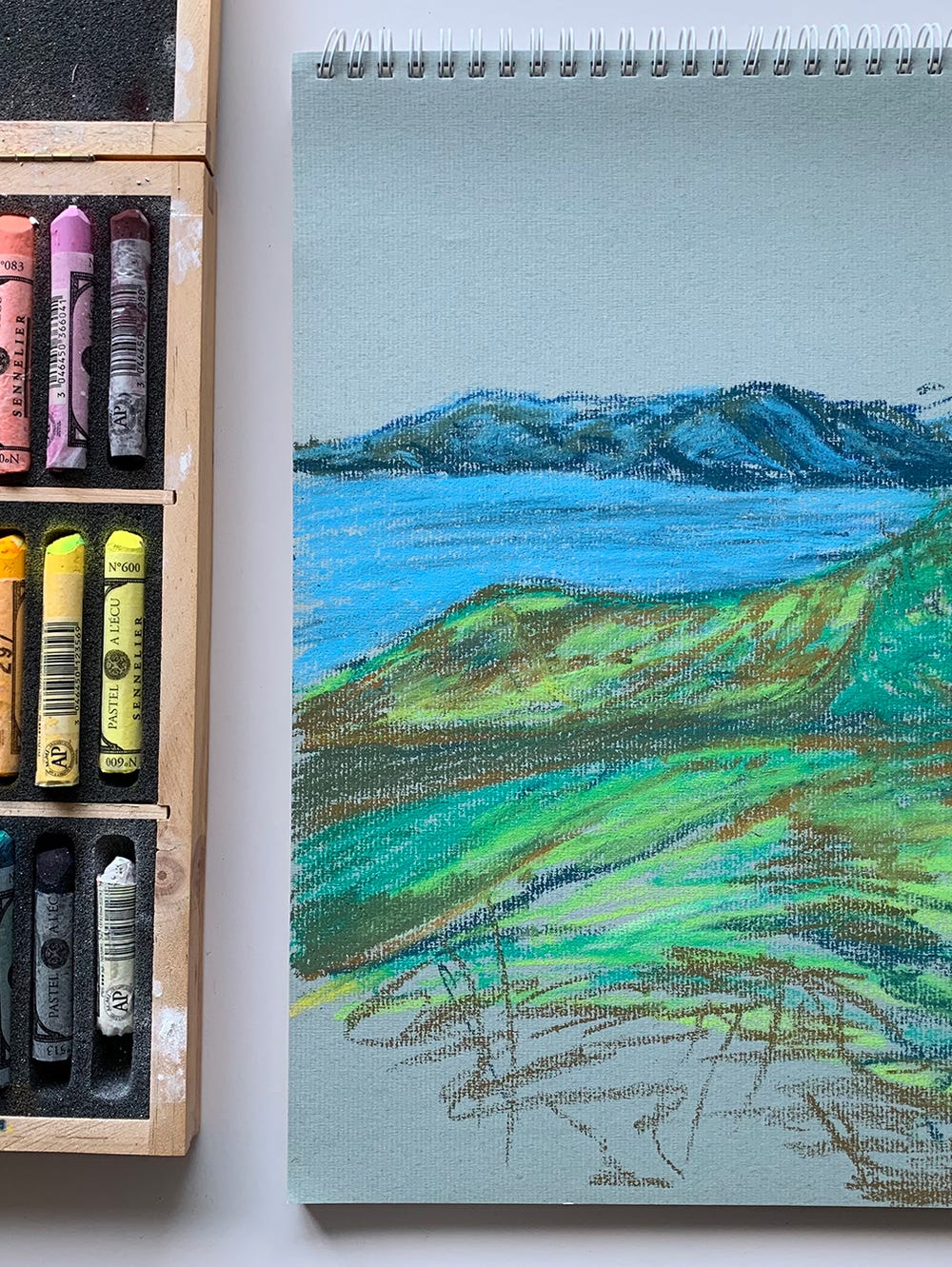de Youngsters Studio: Judy Chicago and Animals around Us
By Jill McLennan, senior teaching artist
October 14, 2021
In this project we learn about Judy Chicago, an artist who paves the way for women in the arts. We look at her series The End: A Meditation on Death and Extinction (2015–2019), emphasizing her concern for the survival of all living creatures on Earth. Examining one living organism, such as a mammal, reptile, insect, bird, we investigate its habitat and survival needs, how human actions are helping or harming it, and how we can adapt and change to help this species survive into the future.
Through art making and research, we can rethink our relationship to the natural world.
Materials
- Research materials, such as reference books or nature magazines
- Sketchbook or sketch paper (2–3 sheets)
- Cardstock or construction paper, black or color of your choice
- Pencil, eraser, and sharpener
- White pencil
- Colored pencils
Questions to Consider
- What animals do you think are most in danger of extinction?
- Which animals are having trouble surviving in the wild due to impact by humans?
- What animal will you choose to focus your project on and why?
Steps
1. Think of a living organism, such as a mammal, reptile, sea creature, bird, or insect, that you would like to focus on for this project. This could be something that you have a personal connection to or something that you know little about. You can look at endangered-species lists, books, and magazines, or just choose your favorite animal. Research and learn some facts about your animal. Write down its common name plus Latin (scientific) name and answers to the following questions:
- Where does it live?
- What habitat does it live in?
- What does it eat? What eats it?
2. On a piece of paper or in a notebook, make a mind map about your animal. Put your animal in the center, then make and number four sections on your paper. Using a pencil, fill in some answers for these questions based on your research:
- What does this animal need to survive in the wild?
- How can humans help this animal survive into the future?
- What are some natural occurrences that are harming the survival of this animal?
- How are humans harming this animal or its ability to survive in the wild?
3. On sketch paper, plan out your animal drawing, making sure to fit the whole body on the paper. Begin with the head shape and draw a line all the way along the spine and down to the feet or flippers or tail. Plan out how the animal will fit on your paper and anything else you might want to draw to show habitat.
- Proportion: The size of each body part as compared to the whole.
- Composition: The placement of objects on a page.
4. Using your eraser, clean up your sketch to make a nice outline of your animal so that you can transfer it onto a different colored paper. Transfer your image by laying the new paper underneath and pressing hard with the pencil to make an indent onto your colored paper. Then redraw the outline of your animal onto the new paper with a white pencil. Add details, such as the face.
5. Think about what type of skin, feathers, scales, or shell your animal has covering its body. In your research materials, look carefully at the patterns and textures of the body covering. Using colored pencils, layer colors and vary the way you use your pencils to show the details of your animal’s appearance.
6. Go back to the information that you collected in your mind map and think about how you can incorporate your research and ideas into your project. You could add words to your drawing that tell about the animal’s name, habitat, food, shelter, or life cycle. You can also add text that tells about why the animal is endangered and how we can help. Consider adding text to your drawing in creative ways:
- Write words into the composition following the forms in your drawing
- Make the words into shapes or parts of your image
- Change the size and shape of your words for emphasis
Reflect
- After creating your animal project, consider the following questions:
- What did you learn about your chosen animal?
- How can humans help this animal to survive?
- How will you share the information that you’ve learned?
Share
In order to ensure this animal’s survival, we need to pass on its story to others. Share what you have learned with at least one other person. Tell a friend or family member about your animal and how we can help it survive. Present the story to your class at school or to your family at a dinner party. Share your image on social media or hang it in the window of your home so people on the sidewalk can see it.
We would love to see what you create! Email pictures of your artwork to families@famsf.org or tag us on any social platform with #deyoungsters.
